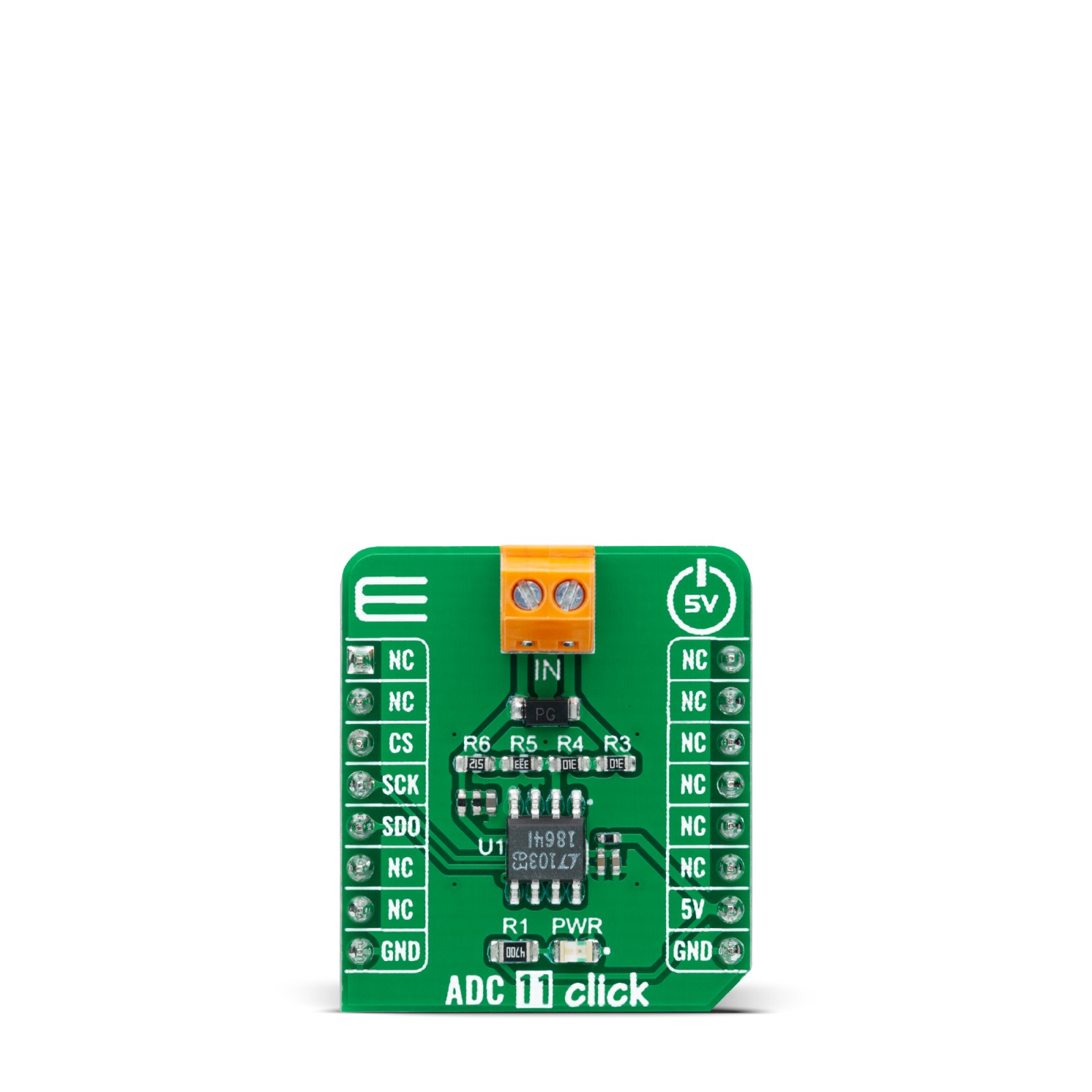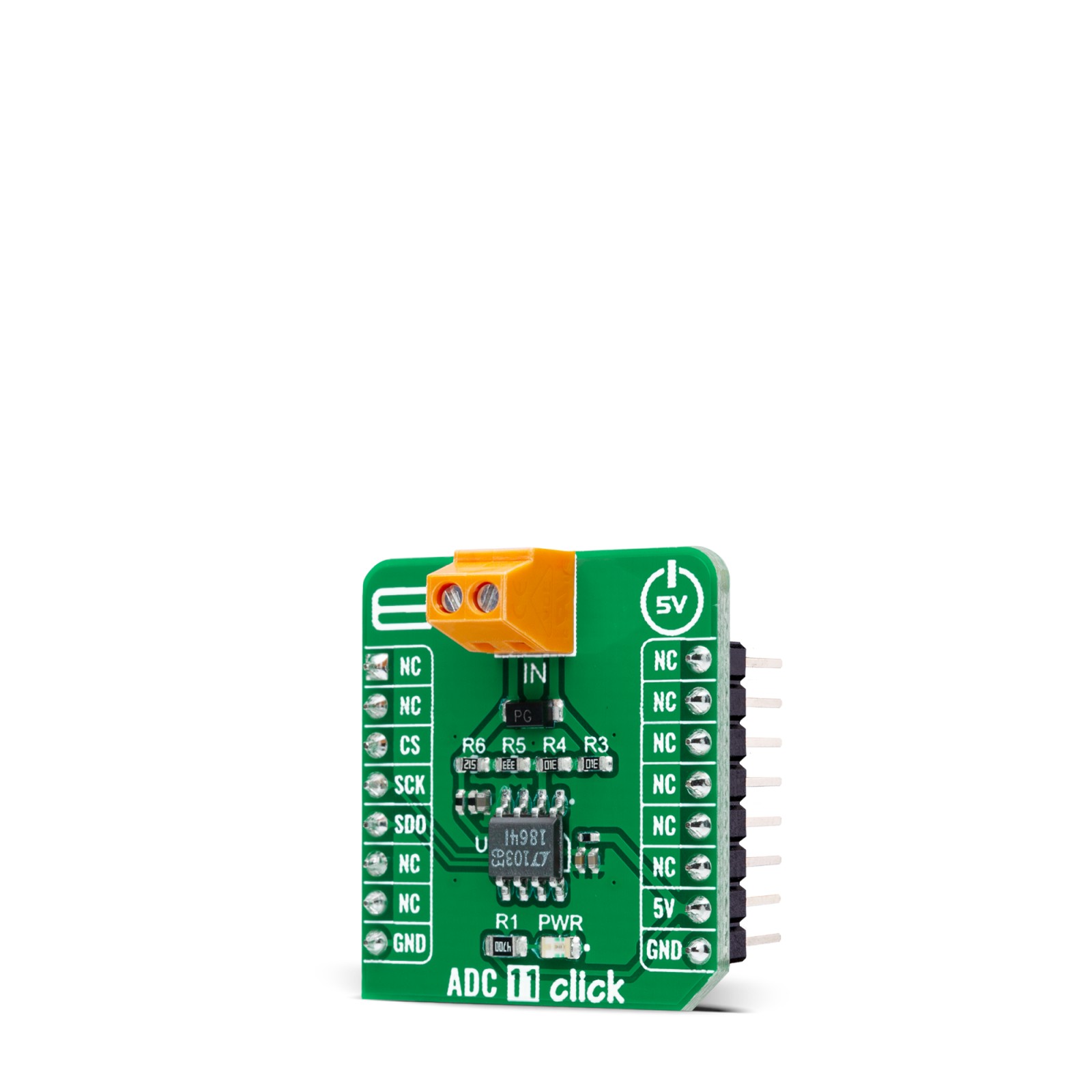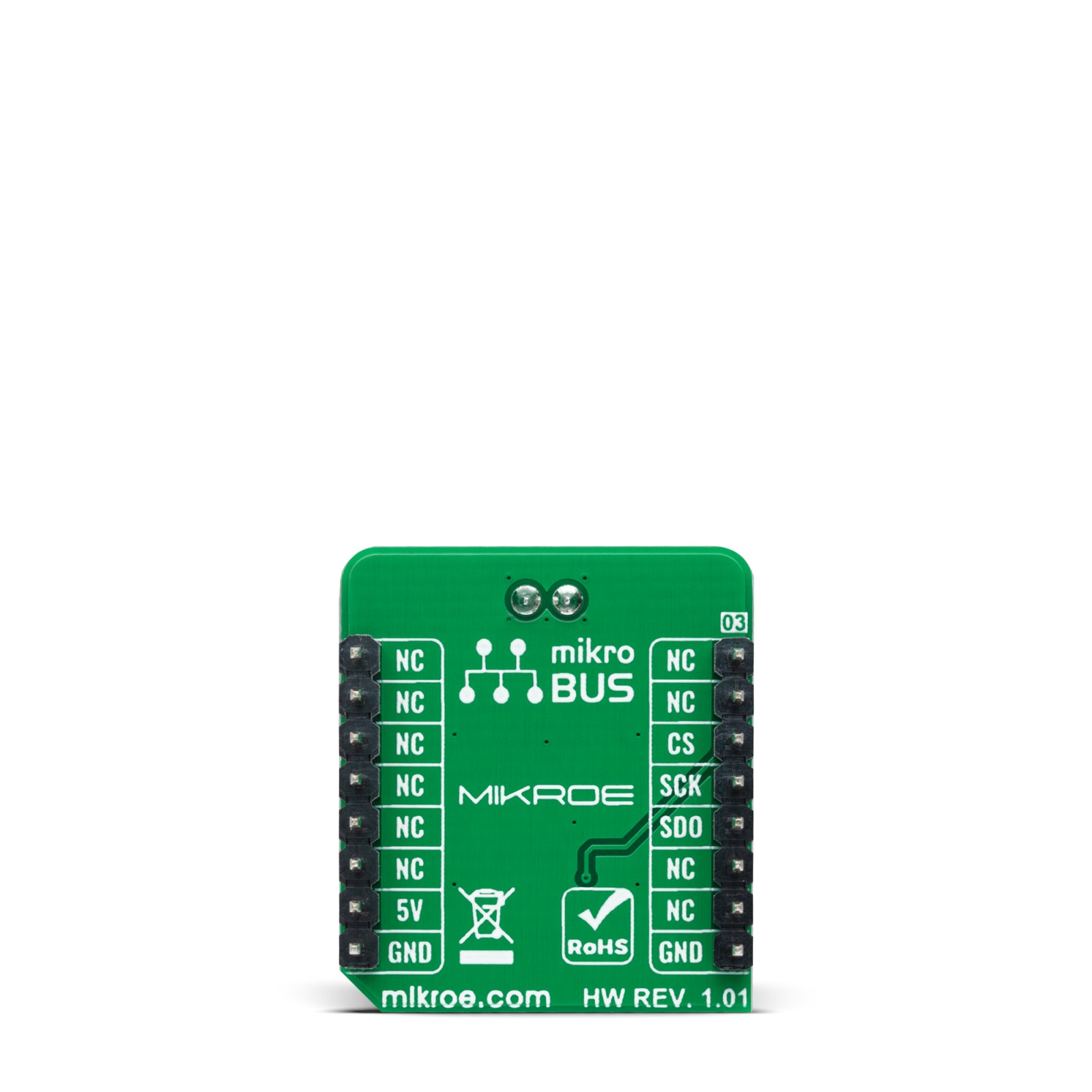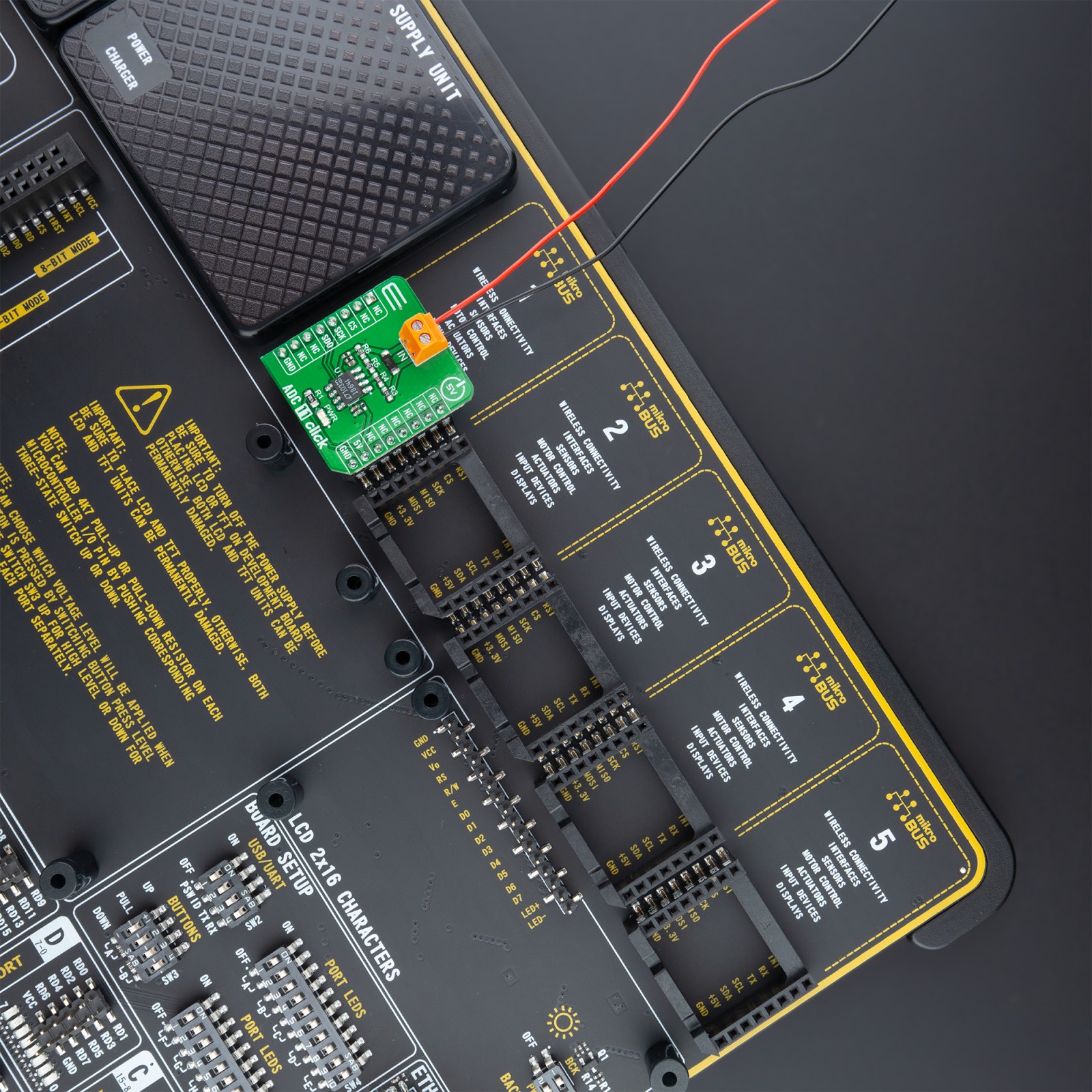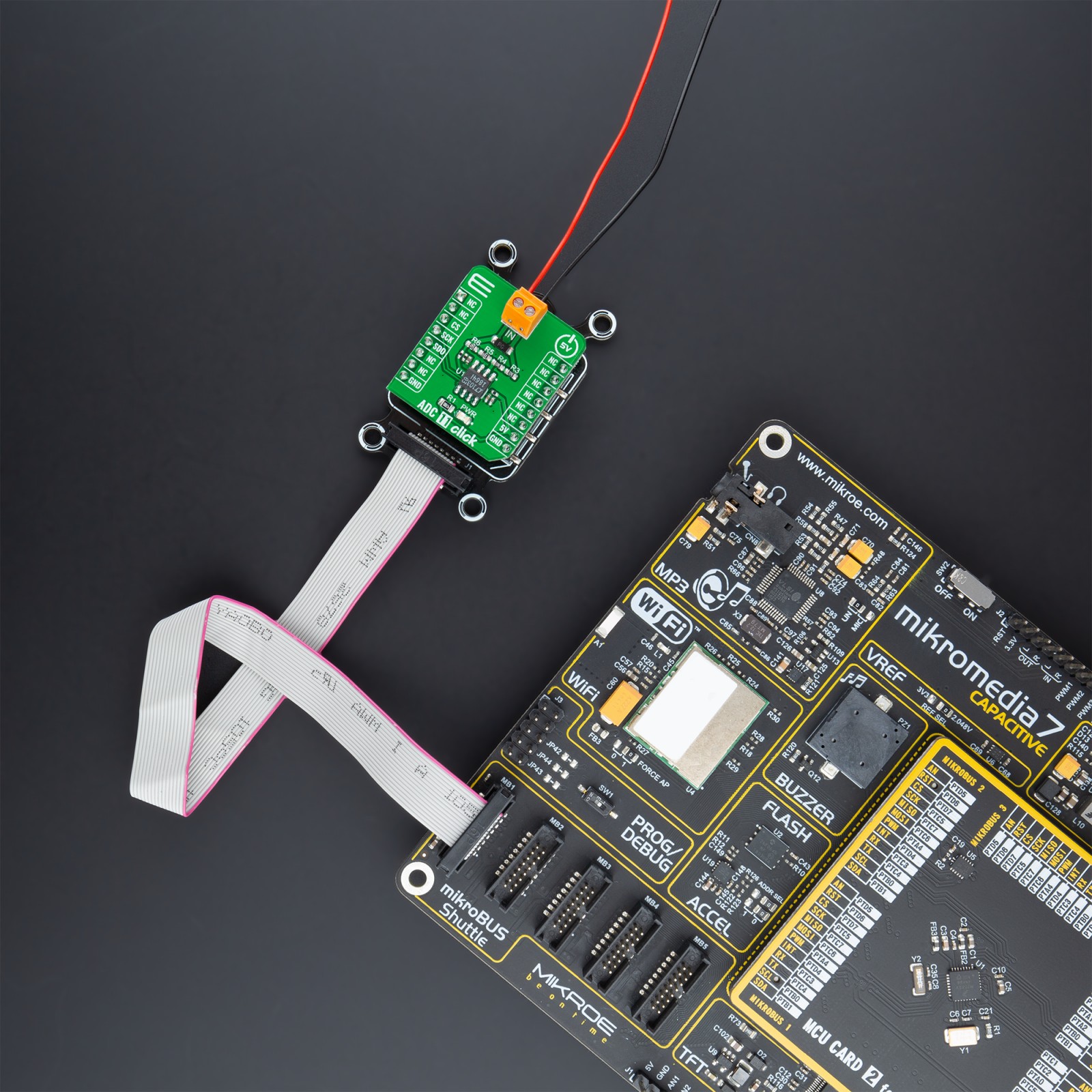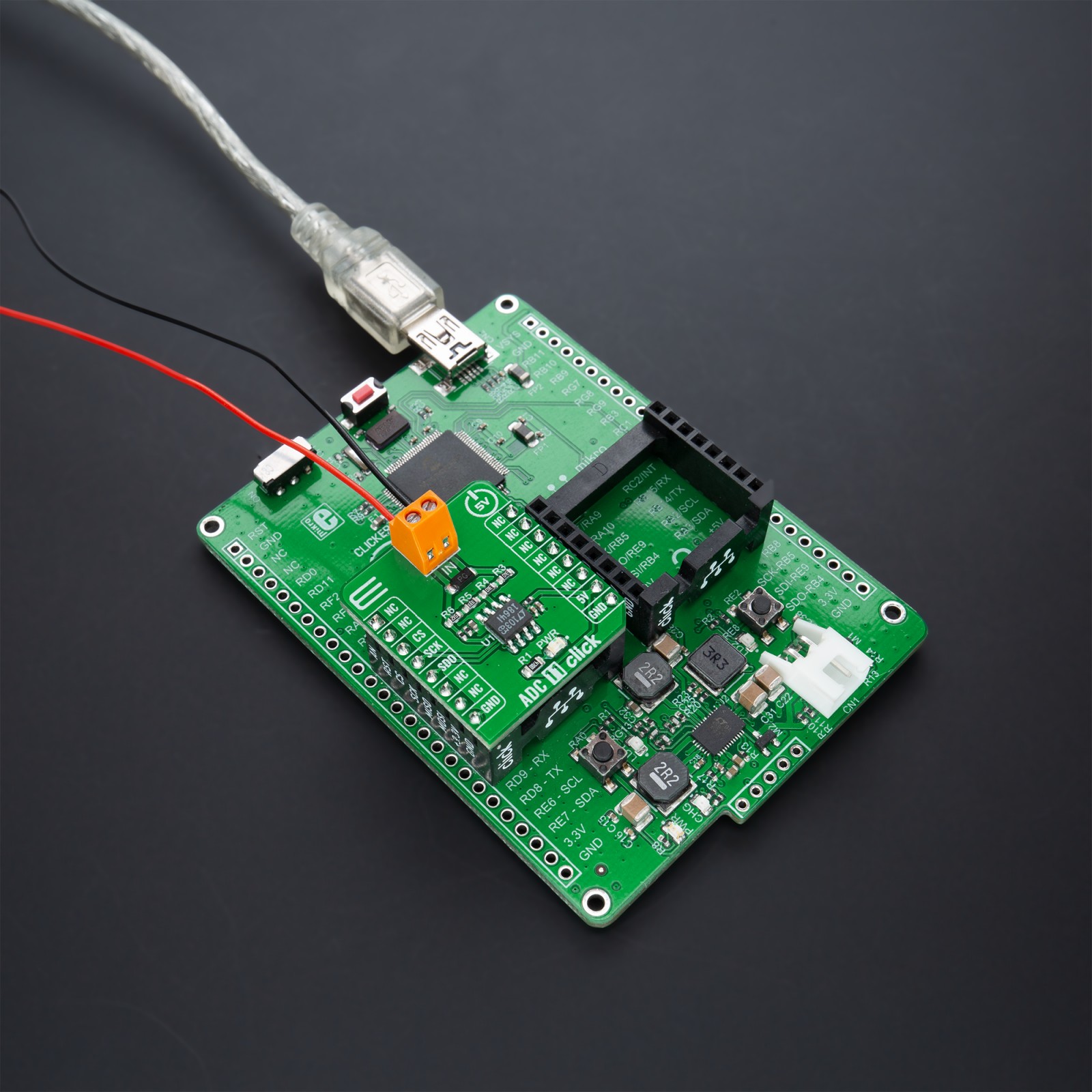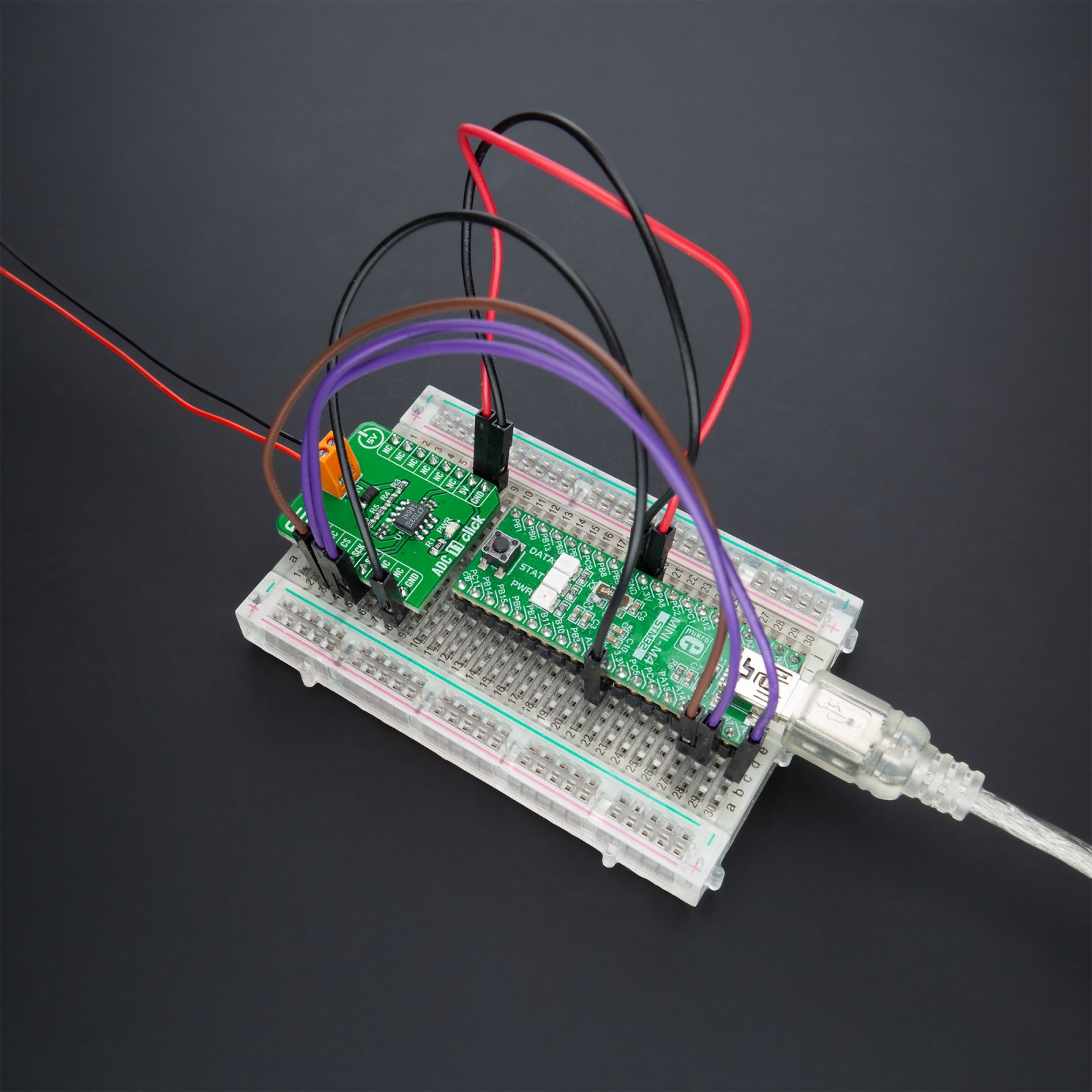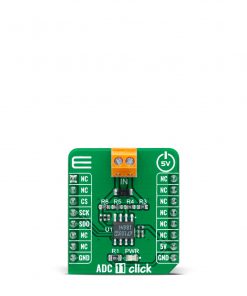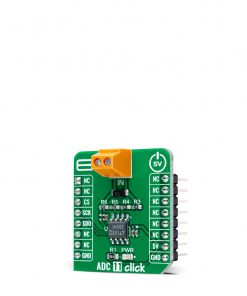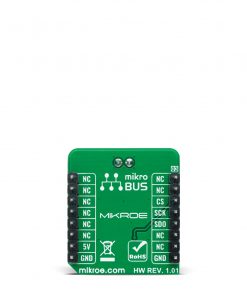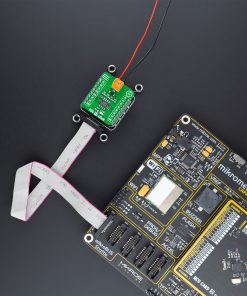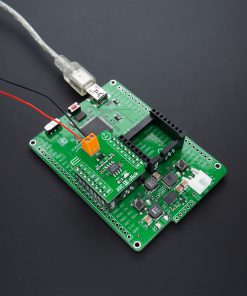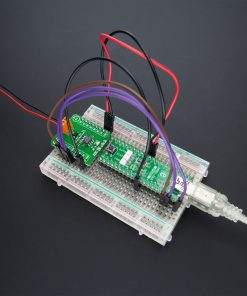ADC 11 Click
R730.00 ex. VAT
ADC 11 Click is a compact add-on board that contains a high-performance data converter. This board features the LTC1864, a 16-bit 250ksps analog-to-digital converter from Analog Devices. With a typical supply current of only 850µA at the maximum sampling frequency, the LTC1864 is among the lowest power consumption ADCs available. After conversion, the LTC1864 goes into a low-power Sleep mode, further reducing the supply current. That’s why it can run at proper micro-power levels in applications that do not require the maximum sampling rate of the LTC1864. This Click board™ is suitable for high-speed data acquisition, low power battery-operated instrumentation, isolated and remote data acquisition, and many other applications.
ADC 11 Click is supported by a mikroSDK compliant library, which includes functions that simplify software development. This Click board™ comes as a fully tested product, ready to be used on a system equipped with the mikroBUS™ socket.
Stock: Lead-time applicable.
| 5+ | R693.50 |
| 10+ | R657.00 |
| 15+ | R620.50 |
| 20+ | R597.14 |

